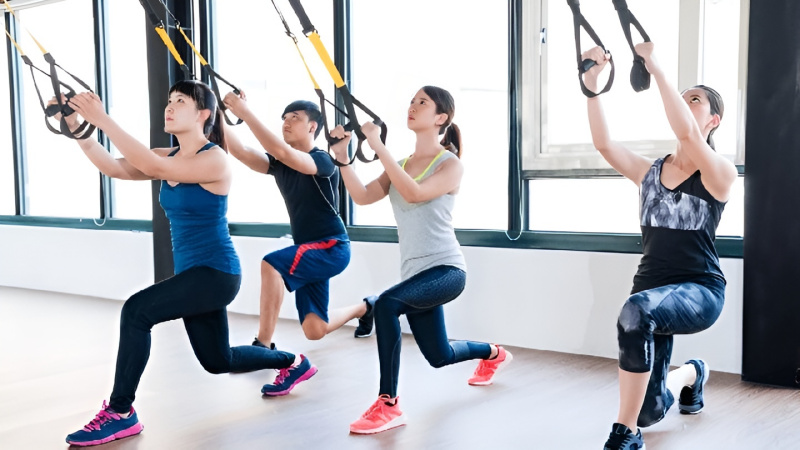Sciatica is a condition of pain along the path of the sciatic nerve, starting from the lower back and radiating down to the buttocks, thighs, calves, and feet. In addition to following the doctor’s instructions for treatment, people with sciatica pain also need to change some bad habits in their daily lives to avoid worsening the condition.
Here are 4 bad habits to avoid when suffering from sciatic nerve pain. Take a look now!
1 4 bad habits to avoid when suffering from sciatic nerve pain
Avoid sitting for too long
When sitting continuously for a long time, the body weight accumulates on the lower back, putting pressure on the spinal discs and sciatic nerve. This pressure can lead to herniated discs, one of the most common causes of sciatic nerve pain.
In addition, sitting continuously for a long time can also reduce blood flow to the lower back, causing weakness in the muscles and nerves in this area. When the muscles and nerves in the lower back are damaged, they can compress the sciatic nerve, causing sciatic nerve pain.
To reduce the risk of sciatic nerve pain from sitting continuously, patients should:
- Stand up and move gently every 30 minutes of sitting: This will help reduce pressure on the lower back and improve blood circulation.
- Maintain the correct sitting posture: Sit up straight, place both feet on the floor, and keep the feet at a right angle to the thighs.
- Use a chair with back support: This type of chair can help keep the back straight and reduce muscle tension.
 Sitting for too long puts pressure on the sciatic nerve
Sitting for too long puts pressure on the sciatic nerve
Avoid intense workouts
High-intensity exercises, such as weightlifting, soccer, running, etc., require muscles to work at high intensity, putting pressure on the spine and sciatic nerve. This can make the sciatic nerve pain worse.
In addition, when exercising at high intensity, muscles can become stiff, leading to muscle soreness. This can also make the sciatic nerve pain more uncomfortable.
To avoid worsening the condition of sciatic nerve pain, patients should only exercise gently and within their limits. Suitable exercises for people with sciatic nerve pain include:
- Walking: Walking is a simple, gentle exercise that is highly effective in improving flexibility and reducing sciatic nerve pain.
- Swimming: Swimming is an exercise that helps relax muscles, reduce tension, and improve mobility.
- Yoga: Yoga helps increase muscle flexibility and improve posture, reducing pressure on the spine.
- Pilates: Pilates is an exercise that helps strengthen muscles and improve flexibility.
- Patients should consult a doctor or physical therapist for advice on exercises suitable for their health condition.
 High-intensity exercises can make the sciatic nerve pain worse
High-intensity exercises can make the sciatic nerve pain worse
Avoid slouching when moving
When slouching, the lumbar spine is excessively curved, causing the muscles in this area to be stretched and strained, putting pressure on the sciatic nerve. In addition, when in a slouched position, the body weight will be placed on the front of the spine, causing the vertebrae to deviate from their normal position. This also compresses the sciatic nerve.
Therefore, people with sciatic nerve pain should avoid slouching when moving. Instead, patients should keep their back, head, and neck in a natural position when moving. A natural position is one in which the spine maintains 3 natural curves, including:
- The cervical spine slightly curved forward.
- The lumbar spine slightly curved backward.
- The thoracic spine slightly curved forward.
To maintain a natural position when moving, people with sciatic nerve pain can consider the following tips:
- Exercise regularly to strengthen the muscles in the lumbar region.
- The thoracic spine is slightly curved forward.
- Use a back brace or lumbar support device when moving to stabilize the spine.
- Move slowly, avoid rushing and sudden movements.
- When sitting, sit up straight and avoid sitting for too long.
 People with sciatic nerve pain should avoid slouching when moving
People with sciatic nerve pain should avoid slouching when moving
Avoid incorrect lifting positions
Bending the back, leaning forward when lifting objects puts pressure on the spine, muscles, and ligaments in the back. This pressure can damage the sciatic nerve, making the pain worse.
When lifting objects, people with sciatic nerve pain should follow these steps:
- Stand upright, with feet shoulder-width apart, a straight back, and contracted abdominal muscles.
- Bend the knees, lower the hips and squat, keeping the back straight.
- Use the hands to lift the object, still keeping the back straight.
- Stand up slowly and move the object to the desired position.
Bending the back when lifting objects puts pressure on the spine, muscles, and ligaments in the back
2 Considerations in daily life to minimize sciatic nerve pain
In addition to using medication and medical treatments, people with sciatic nerve pain should also pay attention to some things in their daily life to help reduce pain and prevent the disease from recurring. Specifically:
- Get enough rest: Patients should get 7 – 8 hours of sleep per night and avoid standing, sitting, or walking for too long.
- Avoid pain-inducing positions: Some positions can put pressure on the spine and sciatic nerve, making the pain worse. Patients should avoid positions such as sitting with crossed legs, slouching, leaning forward, lifting heavy objects, etc.
- Engage in gentle exercise: Gentle exercise can help strengthen muscles and improve flexibility, thereby supporting the reduction of sciatic nerve pain.
- Eat a healthy diet: Patients with sciatic nerve pain should eat a healthy diet to provide the body with essential nutrients, which can help reduce inflammation and pain. Foods rich in [list specific nutrients], [list specific nutrients], [list specific nutrients],… are the perfect choice for people with sciatic nerve pain. In addition, patients should also limit the consumption of processed foods, alcoholic beverages, [list specific foods],…
- Visit a doctor: If the sciatic nerve pain does not subside or worsens, patients should visit a doctor for timely treatment.
 Considerations in daily life to minimize sciatic nerve pain
Considerations in daily life to minimize sciatic nerve pain
Above are our shares on 4 bad habits to avoid when suffering from sciatic nerve pain. Hopefully, with this article, you will gain useful information. Thank you for your attention!
Source: Health & Life newspaper
































